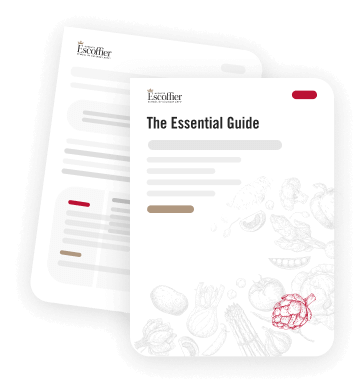Life as a Recipe Tester

Culinary Arts graduate Patti Cook started at Escoffier Online in October of 2012. She joined the online program to expand her culinary knowledge. She now shares her story of how she got involved as a recipe tester.
What is a recipe tester?
A recipe tester develops recipe ideas, writes the recipe and makes the recipe, often multiple times, until it yields a consistent, satisfactory result. Typically, they are not only testing to ensure that the recipe works, but also testing that ingredient amounts are right, the method makes sense, servings amounts are correct and that it tastes good.
How did you get into being a recipe tester?
My first real job as a recipe tester was for EatingWell magazine, but it actually started long before that. When I was a kid, my dad worked at General Foods Corporation. He’d bring home things from the test kitchens there for us to cook. The mixes were often Jell-O creations, so I was particularly excited when I got to do a natural jello story for EatingWell.
What was being a recipe tester like at EatingWell?
It was the best experience ever! I got to work with Jessie Price and Stacy Fraser, both James Beard Award winners. Not only are they walking culinary encyclopedias, they are highly skilled recipe testers with lots of experience. I definitely learned to be a good recipe tester from them. We tested for many factors, including weights for nutrition analysis, correct ingredient amounts and establishing the most efficient flow in preparing a recipe. We also tested make-aheads, techniques associated with the recipe, serving amounts and both active and total timing. EatingWell is known for being meticulous in its recipe-testing process. On average, the cooks there test recipes seven times, so you know if it’s an EatingWell recipe, it’ll work.
What other kinds of recipe testing have you done?
One really exciting recent recipe-testing project was working with Vermont FEED (Food Education Every Day), the Vermont Agency of Education (AOE) and the School Nutrition Association of Vermont (SNA-VT) to develop a cookbook to help transform our nation’s school lunch experience. I co-trained the school cooks who developed the recipes and the culinary students who tested the recipes. New School Cuisine: Nutritious and Seasonal Recipes for School Cooks by School Cooks was recently published and is designed to help schools include fresh local food in their menus, to meet the new USDA nutrition standards and to bridge the gap between what children will eat and food that nourishes their bodies and minds. It’s exciting to know that, because the recipes were thoroughly tested, they really work. The cookbook is beautiful. A printable version can also be downloaded at vtfeed.org
What are your current recipe-testing projects?
At Hinesburgh Public House, the farm-to-table restaurant I work at, I’ve been working with the chef to make all the recipes and revise them for clarity and accuracy. In the restaurant environment, recipe testing is particularly important for food costing as well as for maintaining consistency when different cooks are preparing the recipes. Also, as a food blogger I’m always testing recipes to include with my blogs. From my various kitchen seats, the goal of a recipe tester is to be absolutely sure that when someone makes the recipe, it will work for them, make the amount it says it will and be delicious.


